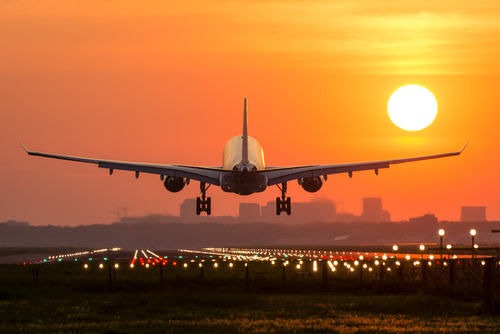A tragic collision between a Black Hawk helicopter and an American Airlines jet over the Potomac River has ignited a heated debate on aviation safety, with former President Donald Trump leading the criticism.
Collision Details and Initial Reactions
The collision involved a UH-60 Black Hawk military helicopter assigned to Fort Belvoir, Virginia. The aircraft was engaged in a training mission when it intersected with American Airlines Flight 5342, carrying 64 individuals, over Ronald Reagan National Airport. The passengers included figure skaters, their coaches, and family members. Key concerns center on the air traffic control communications before the accident, as controllers advised the helicopter to maneuver around the jet with direct instructions.
🚨🚨SHOCKING: A tragic mid-air collision occurred last night near Reagan National Airport, involving an American Airlines regional jet and a U.S. Army Black Hawk helicopter. [Reports]
The incident took place as the commercial plane, identified as PSA Airlines flight 5342, was on… pic.twitter.com/1AunQJgZtt
— truth. (@thetruthin) January 30, 2025
Military training flights commonly occur in the restricted airspace surrounding Washington, D.C., for various operational reasons. Before the collision, an air traffic controller sought visual confirmation from the helicopter crew regarding the approaching jet, signaling its path with precise directions. Unfortunately, the aircraft did not successfully avoid contact. The crash’s aftermath transited from search and rescue efforts to a tragic recovery mission as no survivors emerged from the incident.
Trump’s Criticism and the Broader Implications
President Donald Trump scrutinized the parties involved via social media, expressing skepticism towards their judgment during the critical moments preceding the collision. His remarks have led to a broader discussion on the reliability and integrity of current aviation safety protocols. Trump’s critique has initiated a debate among industry experts, calling for a comprehensive review of safety measures and adherence to standards to avoid future tragedies.
https://twitter.com/chacha72kobe4er/status/1884839541972124060
“PAT25, do you have the CRJ in sight?” – air traffic controller.
The incident also highlights the ramifications of federal policies recently enacted under Trump, including a hiring freeze that could affect air traffic control capabilities. Critics argue that these measures have indirectly impacted the oversight level available to manage such emergencies safely. As discussions intensify, calls for structural adaptations and strategic accountability within the aviation sector will likely follow.
Future Considerations
There are multiple angles from which the future of aviation safety will be approached, particularly emphasizing better training, increased staffing, and improved coordination systems. Washington Representative Rick Larsen reaffirmed the urgent need for hiring more air traffic controllers, advocating adherence to directives outlined in the FAA Reauthorization Act of 2024. The tragedy’s sequence underscores the need for proactive measures to reinforce safety standards.
“The bipartisan FAA Reauthorization Act of 2024 directs the Administration to hire the maximum number of air traffic controllers. That’s what the law says, so the Administration must rescind this ridiculous executive order.” – Rick Larsen.
As the tragedy reverberates through the aviation community and legislative corridors, it presents a vital opportunity for re-evaluating and strengthening the nation’s aviation safety framework. Training, interoperability, and crisis management improvements could be key in preventing similar events and ensuring the safety and security of American skies.
Sources:
https://www.themirror.com/news/us-news/donald-trump-warned-dangerous-policy-942692
https://www.newsmax.com/politics/donald-trump-crash-american-airlines/2025/01/30/id/1197115

